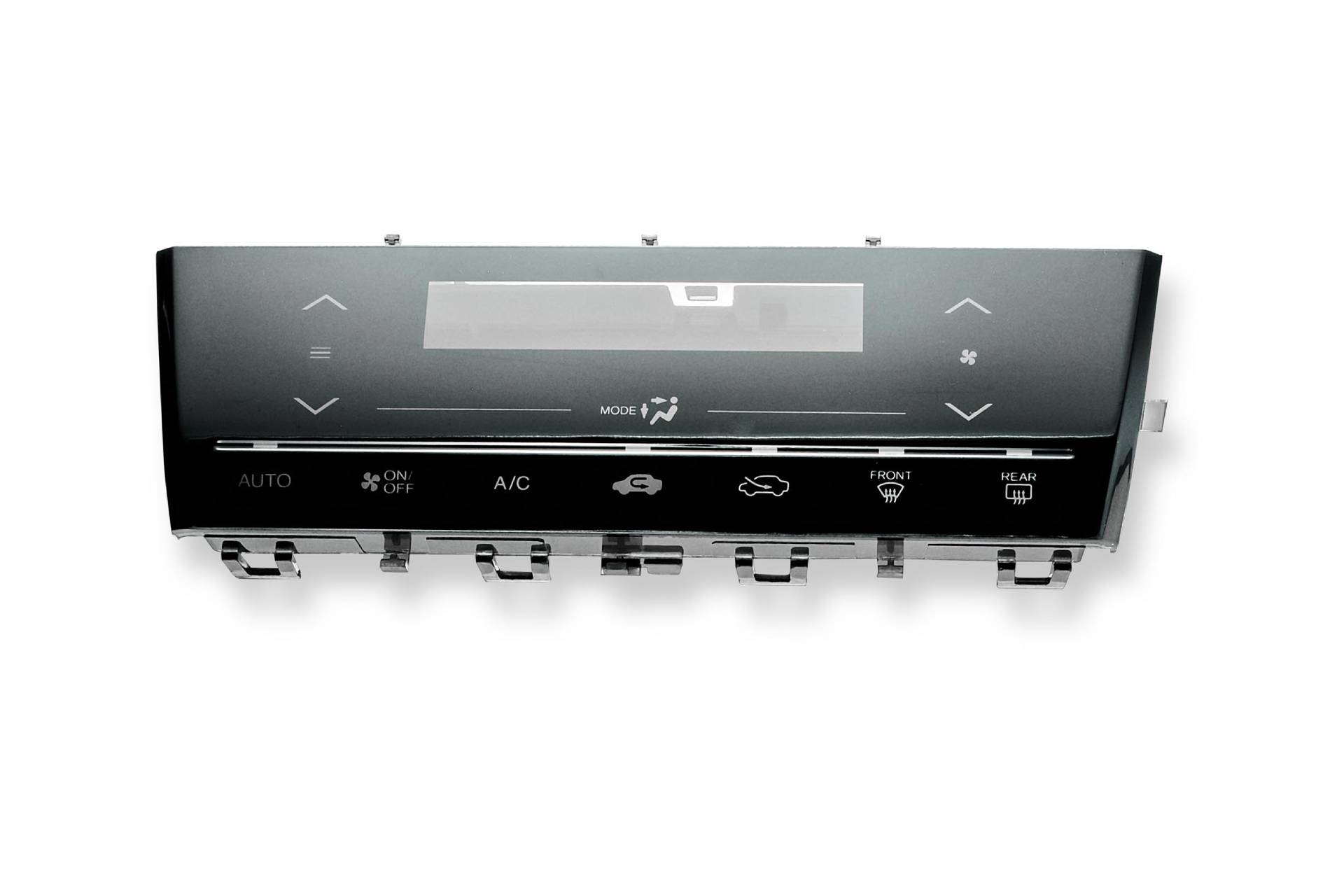How to select the right membrane switch for specific application
Comprehending the Importance of Membrane Change in Modern Electronics
Membrane layer switches are indispensable elements in contemporary digital gadgets. They supply a mix of performance and design that enhances customer communication. Their durable and lightweight nature makes them suitable for various applications. As sectors evolve, the need for customization and advanced attributes grows. Understanding how membrane layer switches add to development reveals their value in forming the future of electronic devices. What lies in advance for this innovation?
The Fundamentals of Membrane Switch Over Innovation
Frequently neglected, membrane layer switch modern technology plays a crucial duty in the modern electronic devices landscape. These tools, composed of several layers, act as user interfaces for different electronic items, varying from home home appliances to clinical devices. A common membrane button contains a visuals overlay, a spacer layer, and a circuit layer, which are thoroughly assembled to create a functional interface.When stress is put on the overlay, the circuit layer is finished, allowing signals to be sent to the device. This modern technology is recognized for its convenience, enabling modification in shape, design, and performance to meet particular individual demands. Additionally, membrane buttons are light-weight and thin, making them appropriate for applications where space is a costs. Their toughness and resistance to ecological elements even more improve their charm, ensuring they can stand up to severe problems while preserving performance. On the whole, membrane button modern technology is important to developing user-friendly and efficient electronic tools

Secret Advantages of Membrane Changes
Membrane layer changes offer several crucial advantages that make them a preferred choice in numerous digital applications. Their style permits a small form element, allowing producers to develop lightweight and sleek tools. Furthermore, membrane buttons are resistant to dirt, dampness, and chemicals, which boosts their sturdiness and longevity sought after atmospheres. The responsive responses offered by these buttons can boost customer experience, making them simple and instinctive to operate.Furthermore, membrane buttons can be personalized with varied graphics and shades, enabling unique branding chances. The production procedure is normally cost-effective, particularly for high-volume manufacturing, as it decreases setting up time and simplifies style. Membrane layer switches need very little maintenance, adding to lower general functional prices. These advantages underscore their expanding popularity in modern electronic devices, where reliability and user-friendly user interfaces are crucial.

Applications Across Different Industries
The adaptability of membrane layer changes enables their prevalent fostering throughout different markets. In the medical area, they are commonly made use of in diagnostic equipment and client monitoring systems, offering a long lasting interface resistant to contaminants. The auto industry uses membrane buttons for control panel controls, improving individual experience with smooth designs that hold up against rough conditions. In consumer electronics, they act as control board for tools such as microwaves and coffee machine, offering a straightforward user interface that is very easy to clean. The aerospace field utilizes membrane buttons in cabin controls, where dependability and space performance are vital. Additionally, the commercial market leverages these buttons in machinery and control systems to ensure robust procedure popular settings. This wide variety of applications emphasizes the versatility of membrane layer switches, making them important elements in enhancing performance and customer interaction throughout varied technological landscapes.
Personalization and Layout Flexibility

Future Trends in Membrane Layer Switch Advancement
Emerging fads in membrane switch growth show an expanding emphasis on boosted performance and integration with wise modern technologies. As customer demand for extra sophisticated electronic tools boosts, suppliers are concentrating on producing membrane switches over that not just offer basic functional duties yet likewise incorporate functions like touch sensitivity, backlighting, and haptic feedback.Furthermore, improvements in materials are anticipated to enhance durability and ecological resistance, making membrane switches ideal for diverse applications in markets such as medical care, vehicle, and customer electronic devices. The combination of capacitive touch modern technology is likely to become a lot more common, allowing for sleeker designs and boosted customer interfaces. membrane switch.Additionally, the surge of the Internet of Things (IoT) is prompting the advancement of membrane layer switches over that can interact wirelessly with other devices, improving interconnectivity. Generally, the future of membrane layer button technology shows up promising, driven by development and the pursuit of easy to use options
Frequently Asked Questions
Just How Do Membrane Switches Over Compare to Traditional Mechanical Buttons?
Membrane layer buttons, being more space-efficient and supplying a streamlined design, comparison with conventional mechanical buttons that give tactile responses. The previous usually include customizable graphics, while the latter generally assure resilience and reliability in different applications.
What Materials Are Frequently Used in Membrane Layer Switch Manufacturing?
Membrane layer switches are typically created making use of materials such as polyester, polycarbonate, and published conductive inks. These products give flexibility, responsiveness, and sturdiness, making them ideal for numerous applications in digital devices and individual interfaces.
Can Membrane Changes Be Fixed or Recycled?
Membrane layer buttons can typically be fixed, specifically if small problems develop, such as glue failing or surface area damage. Total reuse is generally restricted due to put on and potential destruction of products over time.
Exactly How Do Environmental Variables Impact Membrane Switch Efficiency?
Environmental aspects, such as moisture, temperature, and exposure to chemicals, significantly influence membrane switch efficiency. Extreme problems can result in deterioration, influencing responsiveness and longevity, inevitably jeopardizing the performance of the device in numerous applications.
What Is the Normal Life Expectancy of a Membrane Switch over?
The common life-span of a membrane button normally varies from 1 to 5 million actuations, depending upon variables such as use frequency, ecological problems, and the products made use of in production, affecting sturdiness and directory performance long life. A typical membrane layer switch is composed of a graphic overlay, a spacer layer, and a circuit layer, which are thoroughly constructed to produce a useful interface - membrane switch.When stress is used to the overlay, the circuit layer is finished, enabling signals to be transmitted to the device. The tactile responses given by these buttons can enhance individual experience, making them easy and user-friendly to operate.Furthermore, membrane switches can be customized with diverse graphics and colors, permitting for distinct branding chances. As customer need for more sophisticated electronic gadgets increases, manufacturers are concentrating on creating membrane layer switches over that not only wikipedia reference offer standard functional functions yet additionally incorporate functions like touch level of sensitivity, backlighting, and haptic feedback.Furthermore, innovations in products are expected to improve resilience and environmental resistance, making membrane layer changes suitable for varied applications in industries such as health care, automotive, and customer electronic devices. The integration of capacitive touch innovation is likely to end up being a lot more prevalent, permitting for sleeker styles and enhanced customer interfaces.Additionally, the rise of the Net of Things (IoT) is triggering the growth of membrane layer switches that can connect wirelessly with various other tools, improving interconnectivity. Membrane buttons, being a lot more space-efficient and offering a smooth style, comparison with conventional mechanical buttons that offer tactile comments